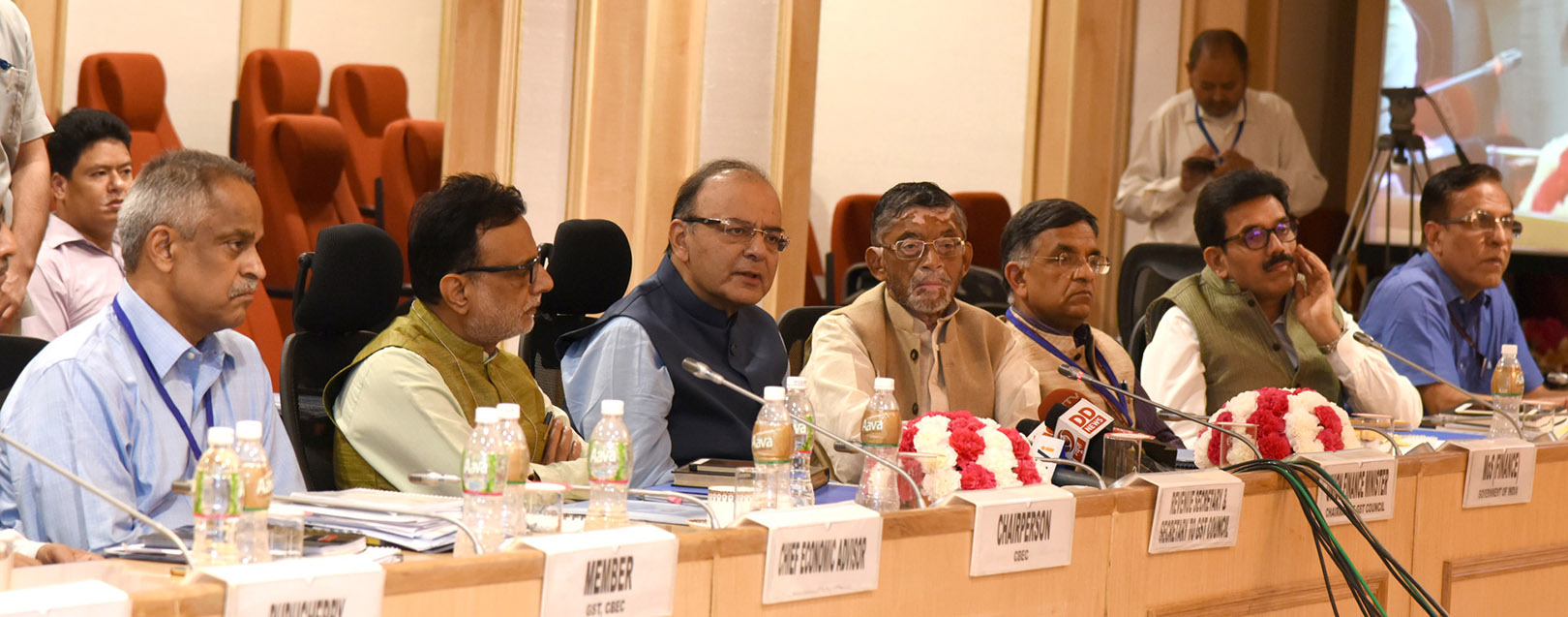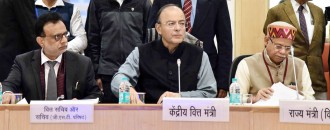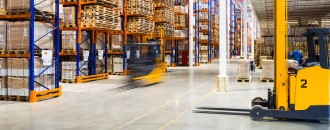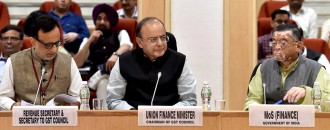
GST Council puts off rate decision to Nov; no clear consensus emerges
PTI
Jaitley said the rate structure can be determined only after deciding whether compensation to states is to be funded out of the rate structure or some special cess or any other source.
The attempt, he said, was to fit zero rated items while levying a 6% tax on items that are currently charged 3% - 9% tax.
"We will finalise the tax structure at the next meeting," he said, indicating there were two standard rates of 12% and 18% under discussion.
Once the GST rates are decided, the GST Council will meet again on November 9-10 to finalise the draft legislations.
Explaining further, Adhia said if cess is not imposed and instead the tax of demerit goods are raised, as suggested by some states, then the number of tax slabs in GST would go up.
"On each one of these luxury items, there is a separate taxation burden. For example, for aerated water, cigarette, bidi, luxury car it may be different. If you have to put each in rate structure, one challenge is how many slabs can you have then.
"Can you have 26% , 45%, 75% slabs? There are commodities where the effective rate of taxation currently is more than 100%. Now the question is, is it feasible to have so many slabs of taxation in GST," Adhia reasoned.
On the issue of dual control and division of authority for assessment, Jaitley said the underlying principle is one assessee will be assessed by one authority.
"So whom will the Centre assess and whom will the state assess and how that bifurcation will take place depends on how the dual authority is managed... The discussion on the two items is continuing, it is still inconclusive. In the fourth meeting of the GST Council these two items would be discussed and hopefully decision taken," Jaitley said.
Presentations have been made by officers of central and state governments on this issue and West Bengal Finance Minister Amit Mitra also presented some statistics, which need to be updated, he said.
The GST Council, in its first meeting on September 23, had decided that states will have exclusive control over all dealers up to a revenue threshold of Rs 1.5 crore in a year.
A mechanism was to be worked out for traders above Rs 1.5 crore to ensure that a dealer is regulated either by the Central government or the state government but not both.
However, in the second Council meeting on September 30, some states disagreed with the decision taken after the first meeting that the Centre will assess 11 lakh service tax filers in the new dispensation.
Initially, there was a feeling that standard rate should be 18%, Jaitley said, adding with Centre proposing two standard rates of 12% and 18%, Centre and states' tax revenue would be protected and there is limited liability on the tax payer.
Explaining why the GST Council could not reach a consensus on GST rate structure, Kerala Finance Minister T M Thomas Isaac said some states insisted that only cess on tobacco and clean environment cess should be used for compensating the states.
"That comes to around Rs 44,000 crore. So you still require some Rs 7,000 crore for making the compensation. It was decided that Centre would look into as to on which items cess would be levied," Isaac said.
He added that he was in favour of raising the highest rate of tax beyond the currently proposed 26% as no business house will pass on reduction in tariff from current levels to the consumer.
Delhi Finance Minister Manish Sisodia said there was no consensus on rates and the GST Council will meet again over dual control on services.
Tamil Nadu Finance Minister K Pandiarajan said administration was a more important issue than tax rate.
The meeting felt the Centre has the power to levy cess which would help protect revenue base. It is an efficient way to compensate states for five years and full proceeds would be earmarked to states, he said.
As per Finance Ministry estimates, the four-slab GST rate of 6% to 26% would lower retail inflation by 0.06%.
As many as 20 items currently in CPI basket may be out of GST net, while an estimated 92 items with total 49.565% weight in consumer price inflation (CPI) basket would attract 0% GST rate.
The 6% GST rate on 29 items in CPI basket are currently taxed at 3% -9%. A total of 71 items in the CPI basket, currently taxed at 9% - 15%, may be put in 12% bracket and another 37 items, currently levied a tax of 15% -21% would be put at 18% rate.
The highest band of 26% would essentially be on 50 items in CPI basket that are currently taxed at more than 21%.


-Vertical.jpg)


